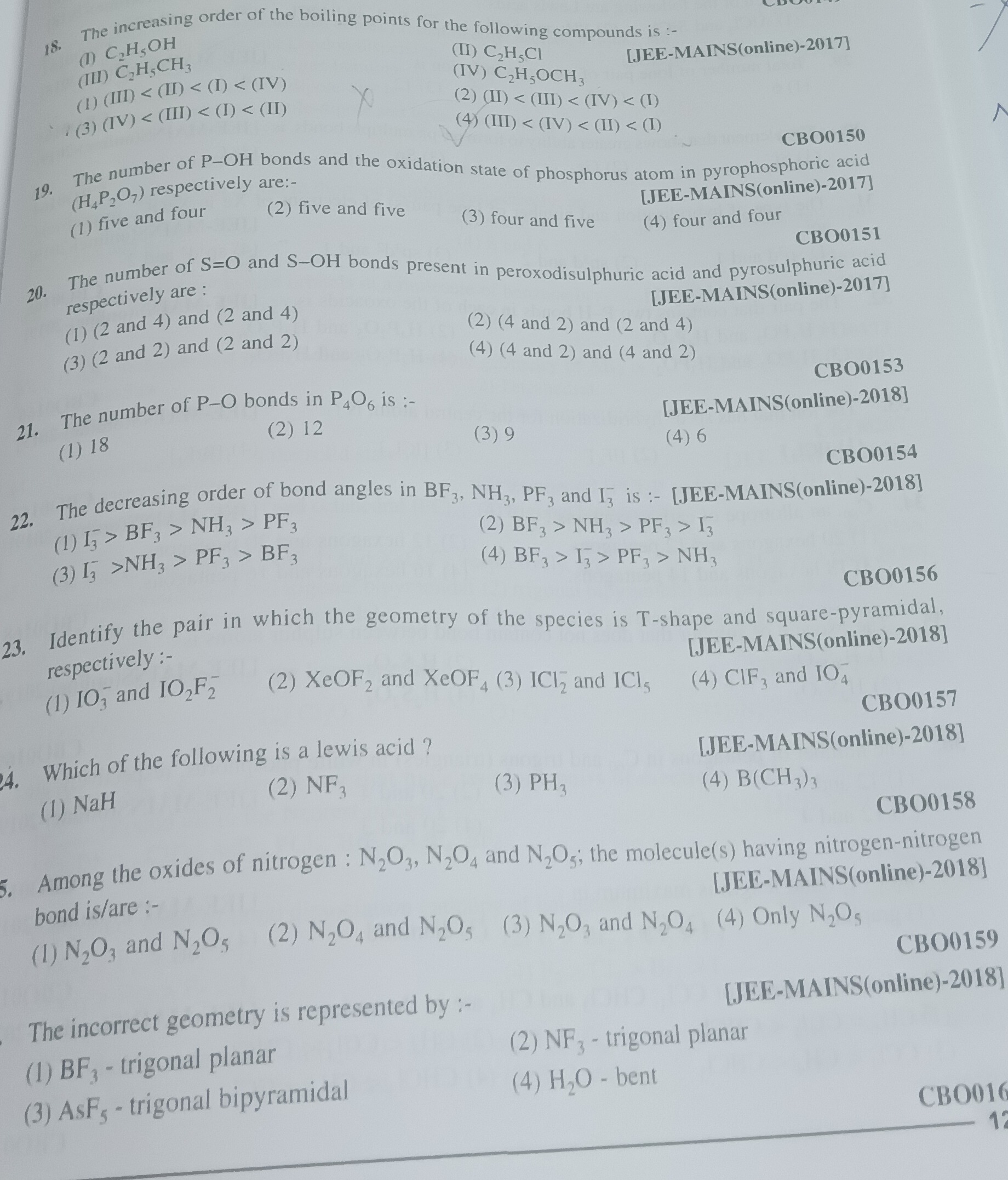Question
Question: The increasing order of the boiling points for the following compounds is :- (I) C₂H₅OH (II) C₂H₅Cl ...
The increasing order of the boiling points for the following compounds is :- (I) C₂H₅OH (II) C₂H₅Cl (III) C₂H₅CH₃ (IV) C₂H₅OCH₃

(III) < (II) < (I) < (IV)
(II) < (III) < (IV) < (I)
(IV) < (III) < (I) < (II)
(III) < (IV) < (II) < (I)
(III) < (IV) < (II) < (I)
Solution
Analysis of Intermolecular Forces and Boiling Points:
Boiling points are determined by the strength of intermolecular forces (IMFs). Stronger IMFs lead to higher boiling points. The main types of IMFs are:
-
Hydrogen bonding: Strongest, occurs when H is bonded to a highly electronegative atom (N, O, F).
-
Dipole-dipole interactions: Occur between polar molecules.
-
London dispersion forces (LDFs): Weakest, present in all molecules, strength increases with molecular size/surface area.
Let's analyze each compound:
-
(I) C₂H₅OH (Ethanol): Contains an -OH group. The hydrogen atom is directly bonded to oxygen, allowing for strong intermolecular hydrogen bonding. This will lead to the highest boiling point.
-
(II) C₂H₅Cl (Chloroethane): This is an alkyl halide. The C-Cl bond is polar, leading to dipole-dipole interactions. It also has London dispersion forces.
-
(III) C₂H₅CH₃ (Propane): This is an alkane. It is nonpolar, so only weak London dispersion forces are present. This will have the lowest boiling point.
-
(IV) C₂H₅OCH₃ (Methyl ethyl ether): This is an ether. The C-O-C bonds are polar, leading to dipole-dipole interactions. However, there is no hydrogen atom directly bonded to oxygen, so it cannot form hydrogen bonds.
Comparison of Boiling Points:
-
Propane (III): Only LDFs. Lowest boiling point.
-
Methyl ethyl ether (IV) vs Chloroethane (II): Both have dipole-dipole interactions and LDFs.
-
C₂H₅OCH₃ (MW ≈ 60 g/mol)
-
C₂H₅Cl (MW ≈ 64.5 g/mol)
Chloroethane has a slightly higher molecular weight and a more polar C-Cl bond compared to the C-O-C system in ether. Generally, for molecules of comparable size, dipole-dipole interactions in alkyl halides are stronger than in ethers.
Actual boiling points:
-
(III) C₂H₅CH₃: -42 °C
-
(IV) C₂H₅OCH₃: 7.9 °C
-
(II) C₂H₅Cl: 12.3 °C
-
-
Ethanol (I): Strong hydrogen bonding. Highest boiling point.
- (I) C₂H₅OH: 78 °C
Increasing Order:
(III) C₂H₅CH₃ < (IV) C₂H₅OCH₃ < (II) C₂H₅Cl < (I) C₂H₅OH
